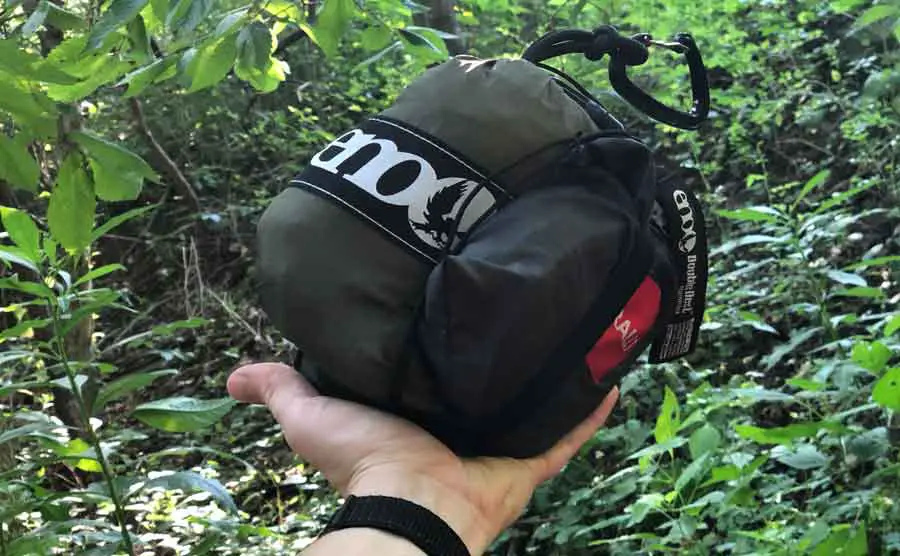
Welcome back to this three-part series on The Ultimate Beginners Guide to Hammock Camping. In part two, we are going to be getting into what gear and equipment you will need to hammock camp and why you need it. If you’ve come directly to this post and missed out on part one, be sure to go check out the beginning of the series. Here are the links and break downs of each part of the series.
Part One: Moving off the Ground
Part one details switching from a tent to a hammock and the benefits of doing so. I will also be discussing the pros and cons of hammock camping so you can decide if it’s right for you. There will information debunking the common misconceptions about hammock camping as well.
Part Two: The Gear You’ll Need
Part two gets into the nitty-gritty of hammock camping and talks about everything you need to get started. I will run through all the gear and equipment you will need and give explanations on why you need to have it. I also get into some optional gear that isn’t necessary, but just nice to have.
Part Three: What You Need To Know
Once you understand all the good, the bad, and the ugly of hammock camping, as well as all the gear you will need, I get into the things you should know before setting up your hammock for the first time. This part of the series will give you tips and tricks to ensure you have the best night’s sleep ever.
So let’s get back into it.
What Gear You Need to Hammock Camp
There are some major differences when it comes to hammock camping vs. tent camping. When you buy a tent, it typically comes with everything you need to set up for camp. Tent camping goes something like this:
- Step 1. Buy a tent
- Step 2. Go camping
Most of the time hammock camping is not that straight forward. Don’t get me wrong, some hammock companies sell complete all-inclusive kits that have everything you need to set up. However, while these setups are great for getting your feet wet as a beginner, many find the options too limiting. Most hammock campers eventually start buying their gear and equipment in an a la carte fashion to allow for more versatility. There are many more options with hammocks than tents that give you complete power over the customization of your setup. The great part is that you can mix and match brands and styles of gear and equipment that will best suit your needs.
Here is my list of hammock camping essentials when it comes to the gear you will need for proper setup and why you need it.
Hammock
Everyone is familiar with the saying, “You get what you pay for.” However, this isn’t necessarily the case when it comes to hammock camping and you can get started on a relatively small budget. When you know hammock camping is something you enjoy, then you can start investing and upgrading your gear and equipment.
When you are just starting out, instead of dropping $60 – $100 on one of the really nice hammocks before you even know you like it, you can buy yourself a hammock at Wal-mart or any other big box store for about $20. Quite honestly, that can keep you going until you figure out if hammock camping is for you. It’s a fairly low-risk investment to get you started.
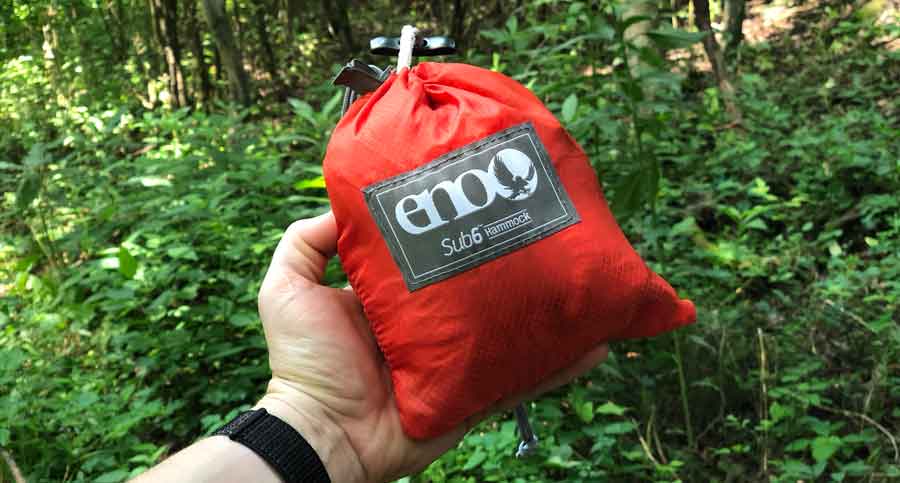
There are two major types of hammocks: single nest and double nest. A single nest is obviously smaller than a double. Think of it as you would choosing a mattress size – do you want a full-size bed or a king-size bed? The double is bigger and they say it’s for two people. My wife and I have put this claim to the test. Let me just say a couple of things here. I love my wife more than anything and we have been married a while now. We still sometimes act like newlyweds and gross people out with our PDA, but there is no way to comfortably sleep a full night next to her in a hammock. Kudos to all of you that can do this!
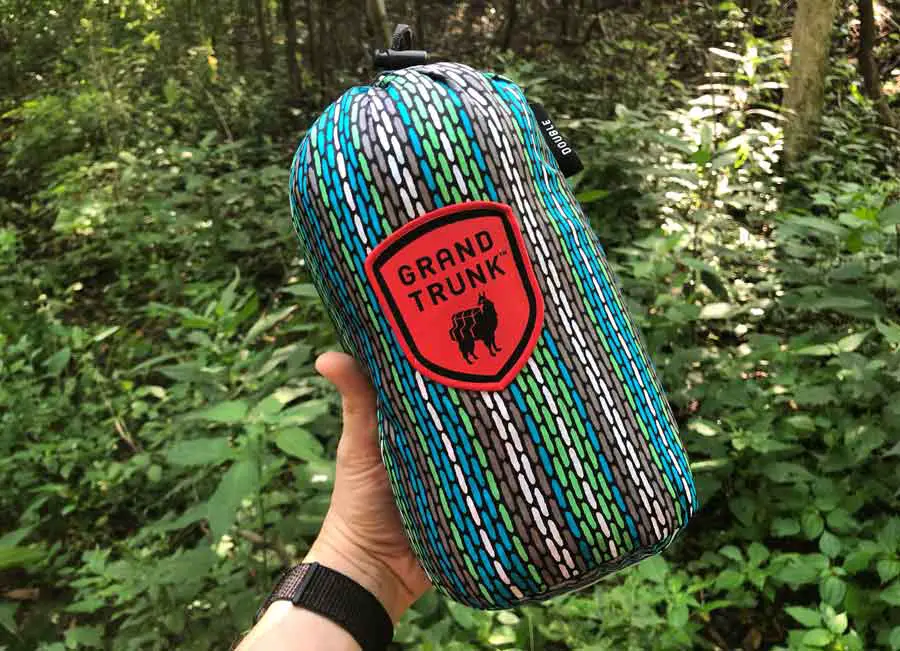
No matter what you choose, the hammock should come in a storage pouch with carabiners attached to each end or some come with a toggle attached. Which brings us to the next part…
Hammock Straps
Hammock straps are the second most important item on this list after the hammock itself. You need straps to properly suspend your hammock. If you’re a person that just wants a hammock for day hikes or want to hang for a long break in the afternoon, the hammock and straps are the only you are going to need. Don’t skimp here and use rope or paracord to hang your hammock. Using the proper straps will protect the trees from damage or death. Read the next article to learn more.
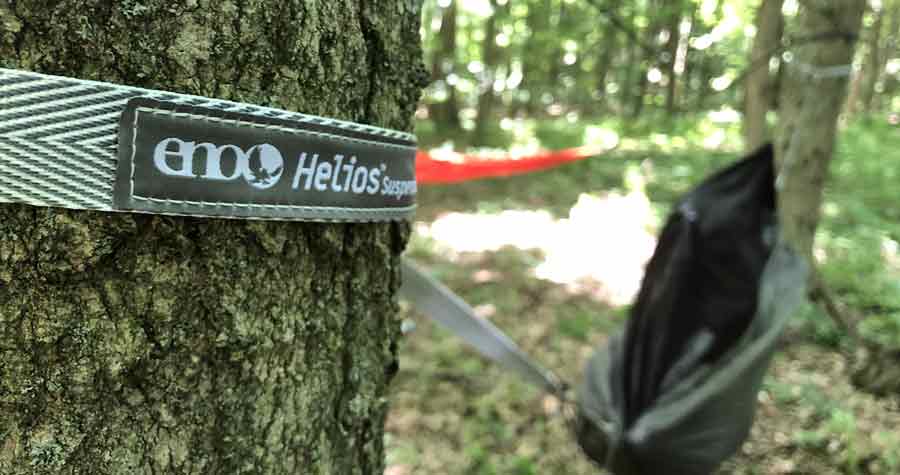
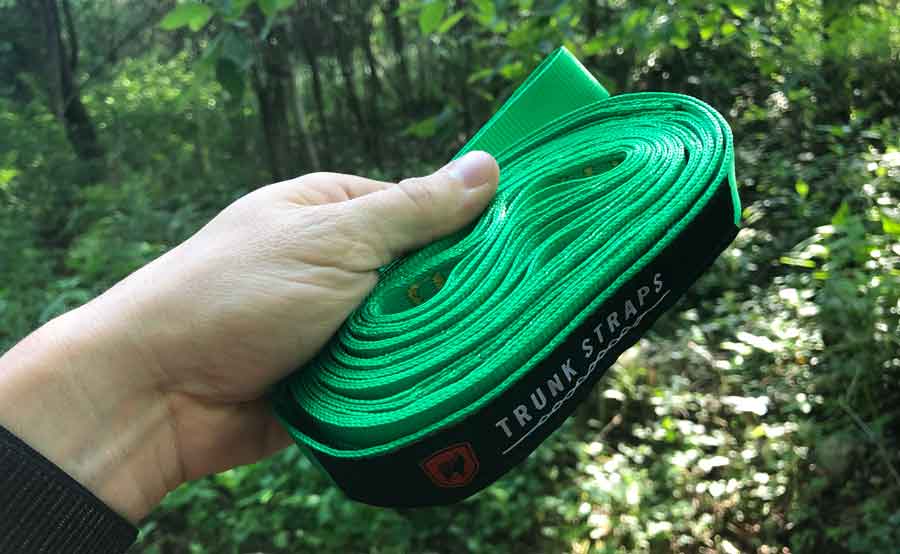
ALSO READ: Do camping hammocks harm trees?
Insulation System
If you’re planning to sleep in your hammock overnight, you are going to need some type of insulation system. This is vital or you will experience a very cold, miserable night no matter how warm it might be outside. Due to the convection that is happening on the underside of your hammock, you will feel cold if the outside temperature is 70F or below. It’s important to understand why you lose heat and how to protect yourself. The key is to find the insulation system or systems that work well for you. You can mix and match the options I listed below and customize to your liking. These, of course, are not the only options and you can learn more in the articles below. I personally use different systems and setups depending on the season and weather.
ALSO READ: Is an Underquilt Necessary?
Sleeping Pad
Sleeping pads are great for protection on your underside. I have a sleeping pad and use it often. These are the same as a sleeping pad you would use on the ground in a tent. Some companies make sleeping pads specifically for hammocks that are shaped to the hammock, but it’s not necessary to have one. My sleeping pad is just a rectangle sleeping pad that fits well in my hammock and it keeps me well insulated.
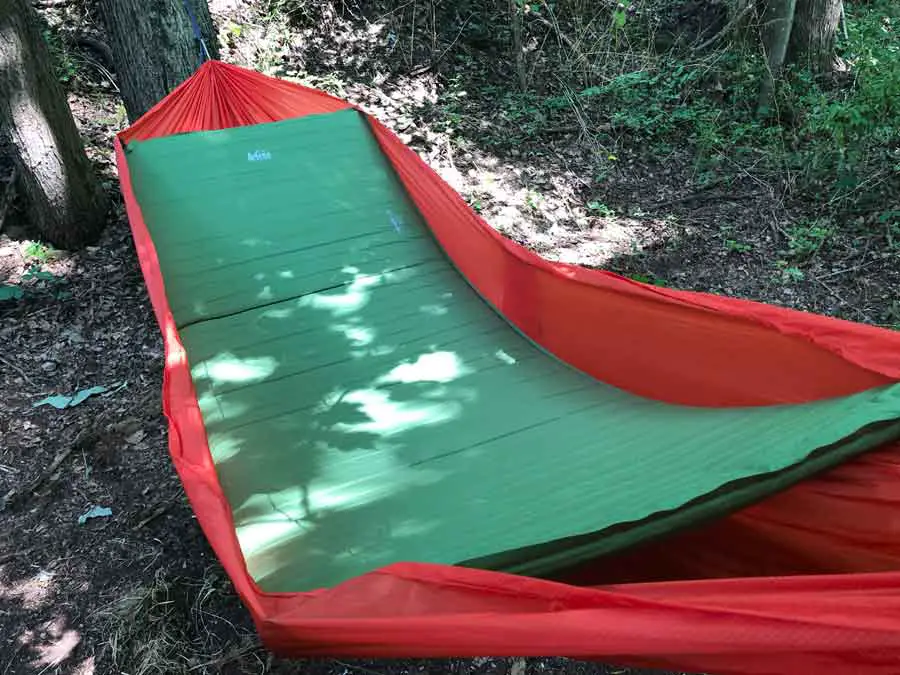
Under Quilt
Underquilts are popular in the hammock camping community. I have an underquilt that I use when I am camping in cold temperatures. Underquilts are kinda like a sleeping bag that wraps around the bottom of your hammock. It basically keeps a warm pocket of air between the quilt and the hammock. If there is no airflow, then you won’t lose body heat through convection. The downside to underquilts is that they are bulky and not the best for backpacking. I don’t typically bring my underquilt along when I go backpacking unless I have to. The use of an underquilt is much better suited to car or stationary camping where I won’t be doing a lot of walking that requires carrying my gear. Another downside is that underquilts can also be on the more expensive side. I still feel that this is a solid insulation option and definitely one of my favorites.
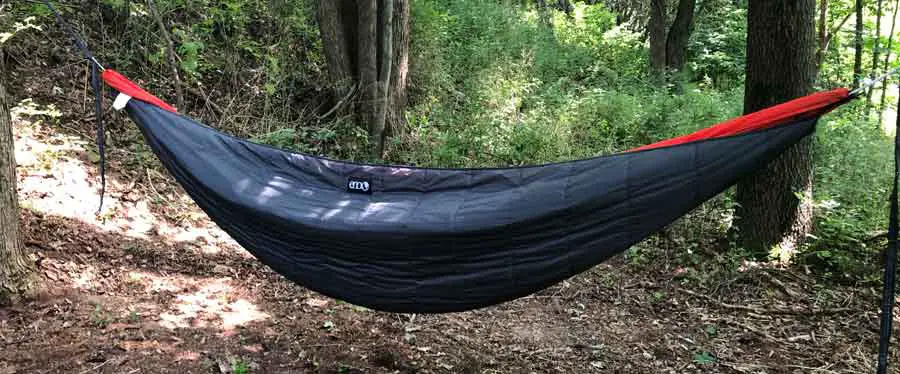
ALSO READ: Is and underquilt necessary?
Top Quilt
Top-quilts protect you from the open air above you hence, TOP quilt. It’s kinda like a sleeping bag and blanket combined. They just cover over your exposed areas and keep you warm through the night. Many people use them in combination with an underquilt for extra warmth.
Sleeping Bag
Sleeping bags, in my opinion, are great options. However, not everyone feels this way. I like the sleeping bag option because it is something that most people already have on hand. There is a lot of back and forth in the hammock community whether they are useful or useless. Some people have issues getting into their hammock and then wriggling their way into a sleeping bag. Others have found ways around this inconvenience. Depending on the quality of your sleeping bag and how you use it matters. I use my sleeping bag as more of a blanket to cover up with and in combination with my sleeping pad, the system works well to keep me warm.
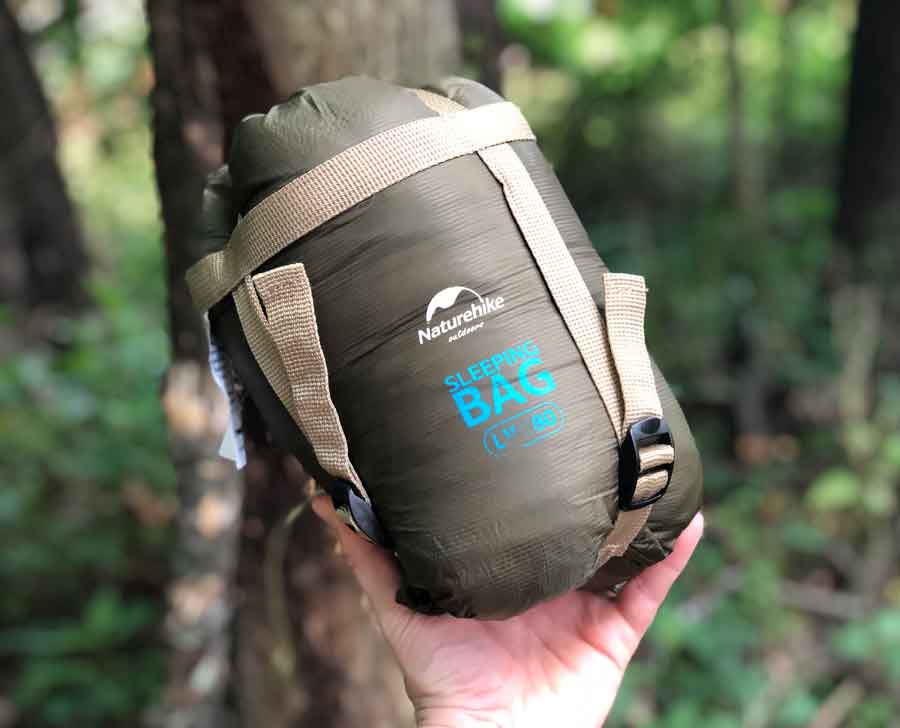
ALSO READ: Do you need a sleeping bag with a hammock?
Rain Fly
Do you NEED to have a rain fly at all times? No, but I recommend it. You definitely don’t want to be caught without one in the case that you need it. A rainfly protects you from the elements, be it wind, rain, or snow. Blocking wind and precipitation is important and a rain fly does this well.
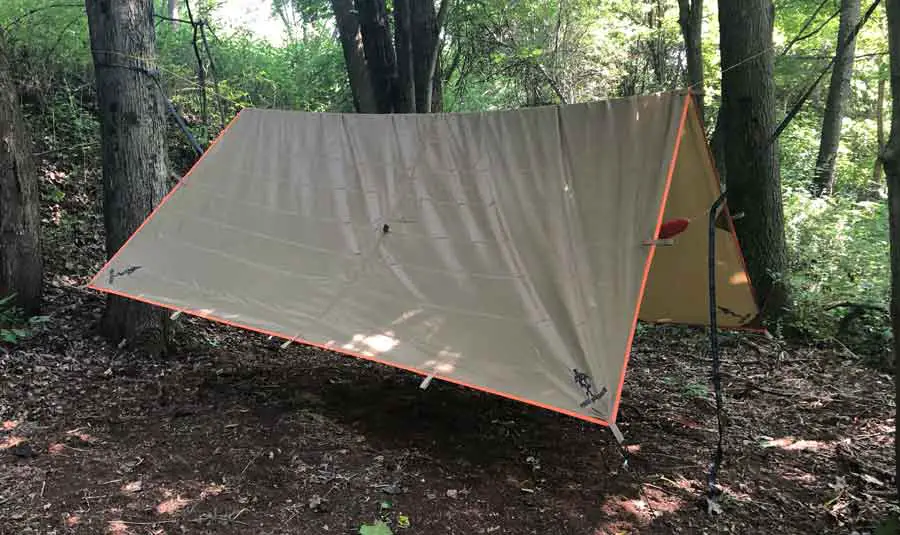
I always pack a rainfly on every trip I take. I don’t always set it up because I love to be under the stars, but if there is even a slight chance of rain, I set it up. I’d rather set it up ahead of time and not use it rather than having to set up in a rainstorm during the night. Getting wet is one of the worst things that can happen to a hammock camper, but is a whole other topic you can read more about in the articles below.
Bug Net
Bug nets are another essential, in my opinion. Depending on what time of year it is and where you plan to camp, it is usually a good idea to have a bug net on hand. There are a few different options when it comes to bug nets. Some hammocks have them integrated into the hammock so you just zip in your hammock and your protected. Others you slide your hammock in the middle of it and it sinches up at the ends to protect you. You’ll only go without having your bug net once. Then you’ll get one. Trust me, no one ever likes being eaten alive during the night and waking to hundreds of itchy, miserable bites.
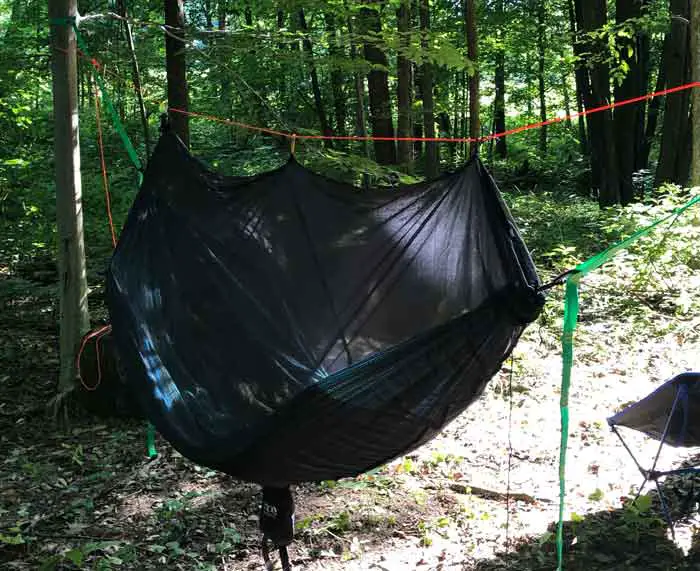
Rope, Paracord or String
You need some type of cordage to properly hang your rain fly and stake it in the ground with guy lines. This is only true if your rain fly doesn’t have any cordage already attached.
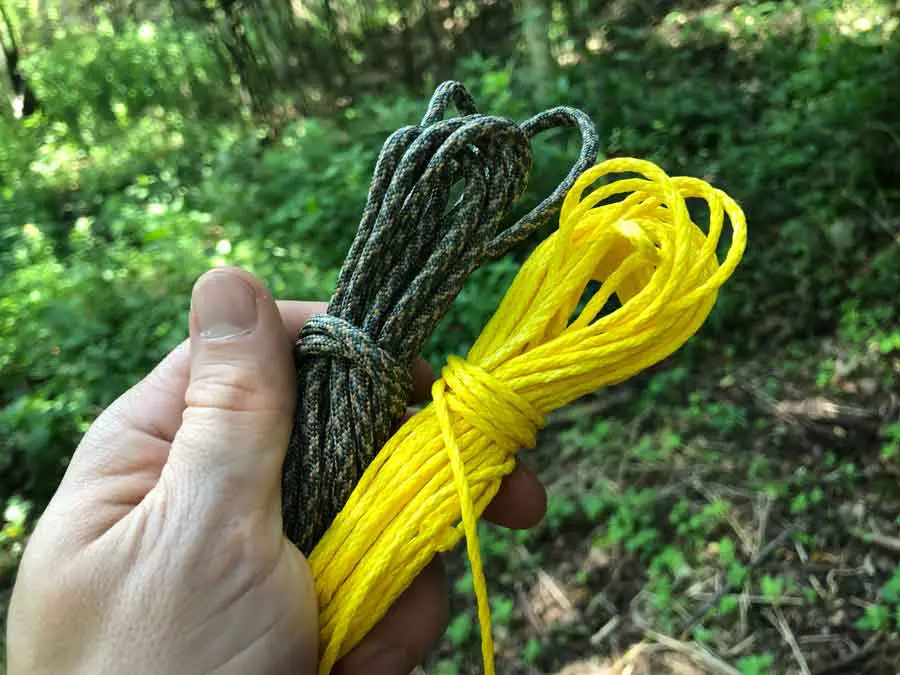
Stakes
Stakes are a must-have for a rain fly. You can set it up without using stakes if you have the perfect grouping of trees, but this often isn’t the case. Most of the time you will need to have ground stakes to properly secure your rainfly to the ground.
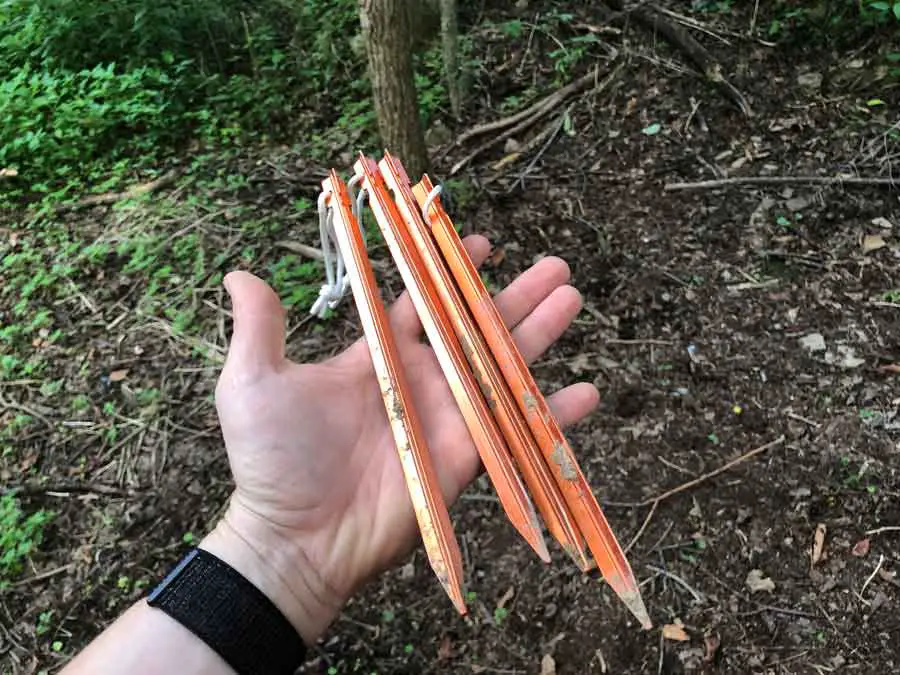
Pillow
A pillow isn’t a must, but it’s a nice addition. Some people don’t use pillows at all. Others swear by them and they feel they need to give their neck just a bit of support. In the end, it all boils down to your preference. Like I keep saying, you do you. Experiment a bit with the different pillow options and find what works best for you.
ALSO READ: Do You Need a Pillow in a Hammock?
You Got the Gear Now What?
I hope this guide has given you some insight on hammock camping essentials. Well at least what I find to be must-haves. So now that you have a list of what you need, the next step is learning how to properly use all this gear and equipment. Be sure to check out part three of this series to find out how to put it all together.
Here are the links to keep you going.
